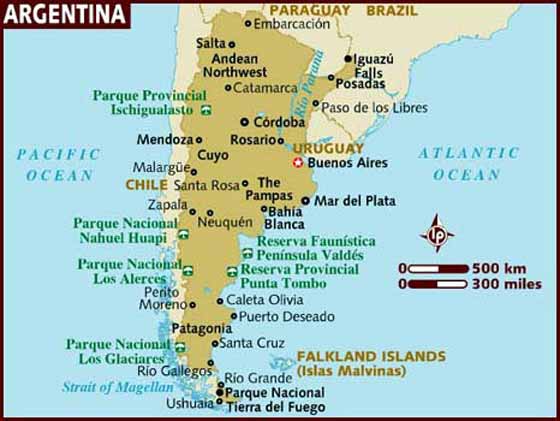China constructs new base in Argentina
August 10, 2018 | Expert Insights

Argentina’s Patagonia region is home to China’s new satellite monitoring station and a robust Chinese influence.
Background
China is a single-party socialist republic in Asia, with over 1.4 billion people and the world’s second-largest economy terms of Purchasing Power Parity (PPP). Argentina is a country in South America which has a population of 43 million people, it is Federal Presidential constitutional Republic and one of the largest, high-income economies in Latin America.
China’s interest in Latin America can be traced to a unique policy paper published in 2008. The paper argues China and Latin America were “at a similar stage of development”, therefore both stand to gain from future partnerships. The new installation will be used to monitor the post-launch operations of China’s Chang’e Lunar Landing program, the next launch of which is due to take off in 2019.

Analysis
The United States declared a new pivot to Asia during President Bush’s administration. The pivot was meant to check the growth of Chinese influence in the Asia-Pacific and it broadly involved building reliable partnerships with China’s neighbours to constrain it. The Asian Pivot, however, came at the cost of Latin America, as President Obama’s policy pushed for greater containment of China and a partial abandonment of its own backyard. The Trump administration, turned the tables by declaring a trade war with China and abandoning the Trans-Pacific Partnership, leaving the Pacific rim countries high and dry.
Additionally, in accordance with the 2008 policy paper, China accelerated its investment in Latin America. China’s demand for key Latin American exports such as iron, soybeans and oil sustained trade and negated the impact of the 2008 Financial crisis. Trade was supplemented by China bailing out governments, investing in infrastructure programs and acquiring enormous amounts of natural resources, binding many Latin American countries with a string.
China uses its version of “Space Diplomacy” to attract countries by offering investments in exchange for the permission to construct a tracking station in the country for monitoring post-launch operations. China already maintains several overseas tracking stations in Pakistan and Namibia, and these projects are usually accompanied by greater Chinese investments in infrastructure and connectivity projects. The satellite monitoring base in Argentina is no exception. The investment in Argentina is strategically timed, considering the country’s dire need for foreign investments.
The China National Space Administration (CNSA) launched an ambitious program in 2004 to explore the moon which consisted of a series of orbital, rover and eventually, manned missions. The observation base in Patagonia is designed to support a rover mission to explore, collect and return with lunar soil samples, which is due to launch in 2019.
It is interesting to note the construction of the base is being carried out by the Chinese military, as opposed to government contractors. It is highly probable that China will use this installation as a new base of operations for a deeper surveillance of the Western Hemisphere. The installation is located in Patagonia, an arid and sparsely populated region in the southern half of the country. The remotely located satellite monitoring station has limited connectivity and is extremely difficult to reach, therefore ensuring the privacy of operations.
A possible implication of this new installation is Argentina’s gradual drift into China’s orbit, arising from an overdependence of Chinese investments and other forms of credit. Argentina is struggling with a sluggish economy, which is expected to grow at 2.5% this year with 9% unemployment. President Mauricio Marci’s pledge to reduce spending through austerity measures have reined in the inflation rate from 27% in 2017 to 18% in 2018. Despite the inflation, credit remains scarce - as Argentina has not been granted access to the international credit markets since 2002.
Assessment
Our assessment is that China is looking to establish a foothold in South America, and the satellite observation base in Patagonia is the first step of many. We feel that China aims to increase surveillance of the Western Hemisphere using this new installation. It is also our belief China’s investment was a well-timed strategic move considering the urgent need for new investments in Argentina. We also feel that, with an increase in Chinese investments in Latin America, China is attempting to undermine the American influence while pulling the continent within its own sphere of influence.








Comments